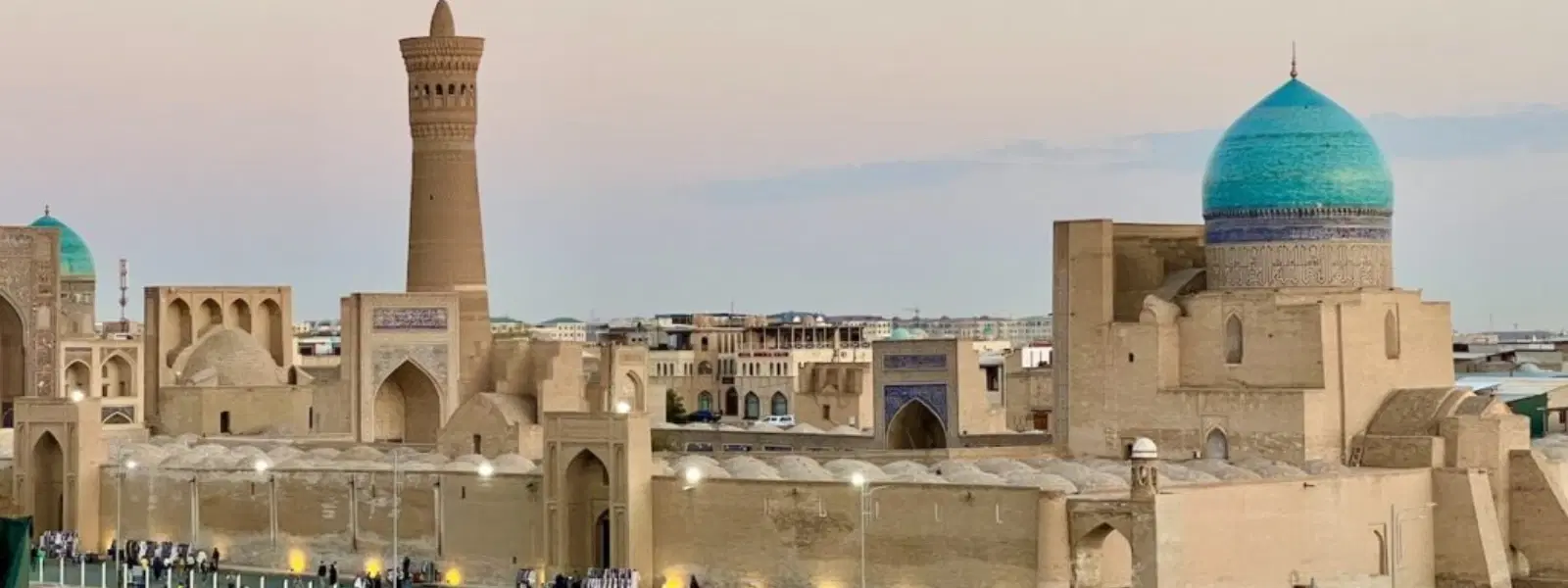
Hotels
•03 min read

Uzbekistan stands at the heart of history, a land steeped in the legacy of the ancient Silk Road. In this post, we'll journey through its storied past, exploring vibrant cities, remarkable architecture, and an enduring cultural heritage that still thrives today. Whether you're a curious wanderer or a meticulous planner, you'll gain insights into Uzbekistan’s role in Silk Road history and modern tourism. For Indian travelers, tips on visa processes, approximate costs in INR, and culturally relevant insights will simplify your planning.
The Silk Road was not a single road, but a vast network of ancient trade routes connecting East and West. It played a crucial role in the exchange of goods, culture, and ideas. Silk, spices, and precious artifacts crossed these roads, while merchants acted as early ambassadors of intercultural understanding. This historic journey not only enriched economies but also sparked creative and scientific exchanges between diverse civilizations.
Strategically situated at the crossroads of these ancient trade routes, Uzbekistan flourished as a melting pot of cultures. Cities such as Samarkand, Bukhara, and Khiva became major hubs, where Silk Road merchants mingled, traded, and shared stories. Its geographical position allowed it to become a beacon of economic and cultural prosperity during the ancient trade era.
Samarkand shimmers as a true gem on the Silk Road. Known for its breathtaking landmarks, the city's gem is Registan Square, surrounded by majestic madrasahs and intricate mosaics. Wander through Shah-i-Zinda and feel the pulse of a bygone era where science and art flourished hand in hand with trade.
Bukhara, often described as a caravanserai haven, radiates the charm of a historic trade center. Its labyrinth of narrow alleyways shelters iconic sites such as the Ark Fortress and the Po-i-Kalyan complex. This ancient city attracts the Planner, offering a blend of timeless architecture and cozy markets that reflect centuries of cultural exchange.

Khiva serves as a captivating living museum, where history whispers from its stone walls. Recognized as a UNESCO World Heritage Site, the fortified inner city of Ichan Kala invites visitors to step back in time and experience life as it was along the Silk Road. Its preserved architecture brings to life stories of strategic importance and cultural dialogue (UNESCO, 2023).
Uzbekistan’s architecture is a visual symphony that marries Persian, Islamic, and Central Asian styles. From the elegant caravanserais that sheltered weary travelers to grand madrasahs and intricately decorated mausoleums, the Silk Road left an indelible mark on the region. Each structure recounts tales of prosperity, artistry, and the exchange of brilliant ideas among civilizations.
The flavors of Uzbek cuisine, the rhythm of its music, and the intricate patterns of local arts have been shaped by centuries of Silk Road influence. Modern-day festivals, traditional crafts, and culinary delights serve as living testaments to Uzbekistan cultural heritage. These traditions continue to enchant visitors, offering a vivid window into a world where art and science once converged.
For those planning their next journey, Uzbekistan offers a diverse array of Silk Road treasures. Beyond the renowned cities of Samarkand, Bukhara, and Khiva, consider exploring Tashkent for its lively blend of modernity and tradition. When organizing your itinerary, keep in mind the best times to visit—typically spring and autumn combine comfortable weather with fewer crowds—and explore various transportation options that suit your travel style.
Crafting your own Silk Road adventure becomes effortless with a well-planned itinerary. Many travel guides and local experts offer sample itineraries, featuring highlights across Uzbekistan and providing convenient Silk Road maps. Whether you prefer guided tours steeped in historical narratives or a self-guided exploration, there are itineraries that cater to every type of traveler.

Did You Know? Uzbekistan’s Silk Road cities were not just trade hubs but also centers of innovation, where mathematics, astronomy, and medicine flourished during the Islamic Golden Age.
Yes, Uzbekistan was a key part of the Silk Road, with cities like Samarkand and Bukhara serving as major trade and cultural hubs.
Samarkand, Bukhara, and Khiva are classic Silk Road cities located in Uzbekistan.
The Silk Route was not confined to one country but spanned multiple regions, including Uzbekistan, China, India, and the Middle East.
Yes, Muslim merchants and scholars were integral to the Silk Road, spreading Islamic culture, science, and trade across Asia and Europe.
Uzbekistan’s rich Silk Road heritage shines through its historic cities, architectural wonders, and vibrant cultural traditions. This travel guide explored how the ancient trade routes have sculpted a modern destination that continues to inspire wanderlust and curiosity. Delve into Uzbekistan’s treasures and experience the legacy of the Silk Route, where every stone has a story to tell.